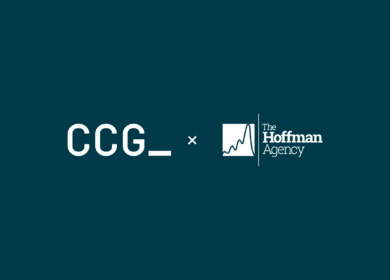For brands today, particularly those operating within or reliant on global trade, the world feels less like a level playing field and more like a complex, ever-shifting minefield directly shaped by current tariff regulations and ongoing trade tensions. Gone are the days when businesses could afford to remain apolitical. In this environment, a brand’s actions — and even its silence — on issues directly impacted by tariffs, such as supply chain adjustments or pricing strategies related to Chinese imports, are instantly interpreted, analyzed, and often, judged by stakeholders on both sides. Managing reputation in this politically charged climate, heavily influenced by the US-China trade dynamic, demands a new level of agility, awareness of tariff implications, and strategic foresight to navigate potential consumer backlash, investor concerns, and government scrutiny in both nations and beyond. It is worth noting that the US government has paused its tariff policy for the next 90 days. This pause allows companies and PR executives a temporary window to prepare and strategize.

1. The Inescapable Political Landscape
The reality is stark: global brands are increasingly political by default. A seemingly innocuous statement on supply chain logistics can be misconstrued as a commentary on trade policy. Silence on a pressing political conflict can be interpreted as tacit approval or, worse, indifference. Stakeholder expectations are deeply polarized, with consumers, investors, and governments often demanding contradictory stances based on their national or political affiliations. This creates a precarious tightrope walk for brands striving to maintain a global presence while navigating fiercely local loyalties. Adding fuel to the fire is the globalization of “cancel culture.” A misstep in one market, amplified by social media, can ignite a viral backlash that swiftly erodes reputation across continents, demonstrating the interconnectedness and fragility of global brand image.
2. The Unpredictable Regulatory Maze
Navigating the global regulatory environment has become a high-stakes game of adaptation. Tariffs and trade wars necessitate constant adjustments to communication strategies as supply chains and market access fluctuate. Isolationist policies are breeding protectionist laws, censorship, and increasingly stringent media regulations, all of which can stifle or severely complicate even the most carefully crafted campaigns. Maintaining cross-border brand consistency, once a cornerstone of global strategy, is now a significant challenge. What resonates positively in one country might be banned outright or face severe criticism in another, forcing PR teams to adopt highly localized and nuanced approaches.
3. The Onslaught of Constant Crises
The modern business landscape is characterized by perpetual crisis. Whether it’s regional conflicts erupting, sophisticated cyberattacks targeting infrastructure, the lingering effects of global pandemics, or the ripple effects of economic sanctions, the next crisis feels perpetually imminent. This constant barrage has led to a concerning phenomenon: crisis communication fatigue among audiences. Overexposure to global instability makes it increasingly difficult for brands to break through the noise with authentic and effective messaging, demanding more creative and empathetic approaches to gain attention and resonate with weary stakeholders.
4. Supply Chain Scrutiny and the CSR Conundrum
Transparency in supply chains is no longer a desirable attribute but a fundamental expectation. Consumers increasingly demand ethical sourcing and sustainable practices. Yet, geopolitical instability throws a wrench into the gears of supply chain visibility, making it harder for brands to guarantee and communicate these values. This complexity bleeds into corporate social responsibility (CSR) initiatives. Brands face ethical dilemmas: should they continue sourcing from countries with documented human rights issues? Should they leverage their platform to speak out against injustice, risking backlash in other markets? There are no easy answers, and every decision carries significant reputational weight.
5. The Weaponization of Disinformation
The digital age has ushered in a new era of reputational risk: the strategic deployment of disinformation and misinformation. State and non-state actors are increasingly leveraging fake news to discredit brands, manipulate markets, and sow discord. This necessitates a fundamental shift in the PR function. It now overlaps significantly with cybersecurity and intelligence. Protecting a brand’s narrative requires real-time monitoring of the information landscape, sophisticated threat detection, and rapid response capabilities to counter false narratives before they take root and inflict lasting damage.
6. Navigating Cultural Fault Lines
The rise of nationalism across the world has amplified scrutiny on brand messaging. What once played effectively on a global scale may now be perceived as offensive, tone-deaf, or even culturally insensitive in specific markets. Multicultural fluency is a non-negotiable requirement. A deep understanding of the nuances of each market, including cultural sensitivities, historical context, and local values, is paramount to crafting messaging that resonates authentically and avoids costly missteps.
7. Internal Pressures and the Employee Voice
The politically charged climate doesn’t just impact external stakeholders; it permeates the internal workings of organizations as well. Workforces are increasingly polarized, with employees expecting leadership to take clear political or ethical stands on pressing issues. This creates a new layer of internal PR challenges. Retention and morale are now intrinsically linked to how well a company communicates its values, vision, and purpose internally. In an era of external uncertainty, a strong and consistent internal narrative is crucial for fostering a sense of belonging, trust, and shared purpose among employees.
In conclusion, managing reputation in today’s politically charged global landscape demands a fundamental rethink of traditional PR strategies. It requires constant vigilance, deep cultural understanding, robust crisis preparedness, and a willingness to navigate complex ethical dilemmas. Brands that can successfully navigate this minefield, prioritizing transparency, agility, and genuine engagement with diverse stakeholders, will be best positioned to not only survive but thrive in this challenging new era.

